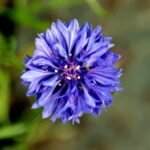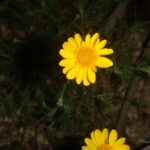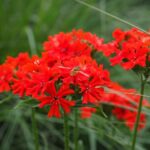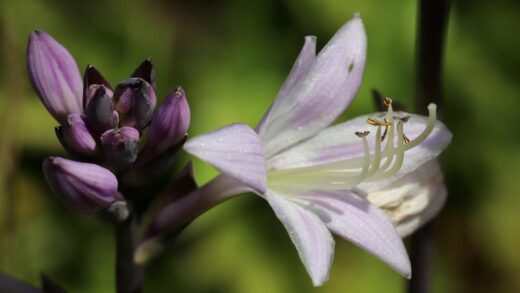The care of firethorn

Pyracantha, commonly known as firethorn, is a genus of large, thorny evergreen shrubs in the family Rosaceae, native to an area extending from Southwest Europe to Southeast Asia. They are valued in gardens for their decorative flowers and berries, and for their dense, thorny structure which makes them an excellent choice for security hedging. Understanding the fundamental care requirements of this robust plant is crucial for it to thrive and display its full ornamental potential. This involves a holistic approach, considering everything from its initial placement in the garden to its long-term maintenance needs, ensuring a vibrant display of color throughout the seasons.
The plant is renowned for its resilience and adaptability, making it a popular choice for both novice and experienced gardeners. It tolerates a wide range of soil conditions, from heavy clay to light sand, as long as the soil is well-draining. Poor drainage is one of the few conditions that Pyracantha struggles with, as it can lead to root rot and other related diseases. Therefore, amending the soil with organic matter before planting can significantly improve its structure and drainage, providing an ideal foundation for healthy growth. The shrub also exhibits remarkable tolerance to pollution, rendering it suitable for urban and roadside plantings where other plants might falter.
One of the most appealing attributes of firethorn is its year-round interest. In late spring to early summer, it produces a profusion of small, white, fragrant flowers that are highly attractive to bees and other pollinators, contributing positively to garden biodiversity. These flowers are followed by spectacular clusters of berries in late summer and autumn, which persist well into winter. The berries come in shades of red, orange, or yellow, depending on the cultivar, and provide a vital food source for birds during the colder months when other food is scarce.
Maintaining the health and vigor of a firethorn shrub involves a few key practices throughout the year. Regular pruning is essential not only to maintain a desired shape and size but also to encourage a more prolific display of flowers and berries. It also helps to improve air circulation within the plant, which can reduce the risk of fungal diseases. Beyond pruning, it is important to monitor the plant for any signs of stress, pests, or diseases, allowing for timely intervention and ensuring the long-term vitality of this splendid garden shrub.
Soil preparation and selection
Proper soil preparation is a foundational step for establishing a healthy Pyracantha. Before planting, it is highly advisable to assess the chosen location’s soil type and drainage capacity. While firethorn is not overly particular about soil pH, it performs best in soils that are neutral to slightly alkaline. A simple soil test can provide valuable information and guide any necessary amendments. For instance, if the soil is overly acidic, adding lime can help to raise the pH to a more suitable level for the plant.
More articles on this topic
To improve the soil structure, incorporating well-rotted compost or manure is an excellent practice. This organic matter enhances drainage in heavy clay soils and improves water retention in sandy soils, creating a more balanced growing medium. This amendment also enriches the soil with essential nutrients, giving the young plant a strong start. When digging the planting hole, it should be at least twice the width of the root ball and just as deep, allowing the roots ample space to spread out and establish themselves without being compacted.
The location for planting should be chosen with care, considering the mature size of the specific Pyracantha cultivar. These shrubs can grow quite large, both in height and spread, so planting them too close to buildings, walkways, or other plants can lead to overcrowding issues later on. Ensuring adequate space allows for good air circulation, which is crucial in preventing common fungal diseases like fire blight and scab. It also makes future maintenance tasks, such as pruning and inspection, much easier to perform.
When selecting a firethorn from a nursery, it is important to choose a healthy-looking specimen. Look for a plant with vigorous, green foliage and no signs of pests or diseases, such as discolored leaves, spots, or webbing. Check the root system if possible; the roots should be firm and white or light-colored, not dark and mushy, which could indicate root rot. Starting with a strong, healthy plant will significantly increase the chances of successful establishment and long-term performance in the garden.
Pruning and shaping techniques
Pruning is a critical aspect of firethorn care, essential for controlling its size, shaping its growth, and maximizing its ornamental features. The ideal time to prune Pyracantha is after flowering, typically in late spring or early summer. This timing allows the plant to develop new wood on which the berries will form for the autumn and winter display. Pruning too late in the season can risk removing the developing berries, diminishing one of the plant’s most attractive qualities.
More articles on this topic
When shaping the shrub, the goal is often to create a dense, well-structured framework. For informal hedges or standalone specimens, selective thinning of branches can improve the overall form and allow more light and air to penetrate the plant’s interior. This involves removing any dead, diseased, or crossing branches first, which is a good practice for any plant. Afterward, you can shorten overgrown shoots to maintain the desired size and encourage bushier growth from the base.
For formal hedges or espalier-trained specimens against a wall or fence, a more rigorous pruning regime is required. This involves regularly trimming the new growth throughout the summer to maintain a neat, tidy shape. It is important to use sharp, clean secateurs or hedge trimmers to make clean cuts, which heal faster and are less susceptible to disease infection. Training a firethorn as an espalier involves tying the main branches to a support structure and regularly pruning back the side shoots to create a two-dimensional, fan-like shape.
A hard or renovation pruning may be necessary for old, overgrown, or neglected shrubs. This is best done in late winter or early spring, just before new growth begins. This process involves cutting the entire plant back to about 30-50 centimeters from the ground. While this seems drastic, Pyracantha is remarkably resilient and will typically respond with a flush of vigorous new growth. It may, however, reduce flowering and berrying for a year or two as the plant recovers and re-establishes its framework.
Managing water and nutrient needs
Once established, Pyracantha is notably drought-tolerant, making it a suitable choice for water-wise gardening. However, newly planted shrubs require regular watering to help their root systems establish. During the first growing season, it is crucial to keep the soil consistently moist but not waterlogged. A deep watering once or twice a week, depending on weather conditions, is generally more effective than frequent, shallow applications, as it encourages the roots to grow deeper into the soil.
Established plants typically do not require supplemental watering except during prolonged periods of extreme heat and drought. When watering is necessary, it is best to apply water directly to the base of the plant, avoiding the foliage as much as possible. Wet leaves can create a favorable environment for fungal diseases to develop, particularly in humid conditions. Applying a layer of organic mulch, such as wood chips or bark, around the base of the shrub can help to conserve soil moisture, suppress weed growth, and regulate soil temperature.
In terms of feeding, firethorn is not a particularly demanding plant and can thrive in average garden soil without regular fertilization. In fact, excessive feeding, especially with high-nitrogen fertilizers, can lead to lush, leafy growth at the expense of flowers and berries. This soft, rapid growth can also be more susceptible to pests like aphids and diseases such as fire blight. Therefore, a cautious approach to fertilization is always recommended.
If the soil is particularly poor or the plant shows signs of nutrient deficiency, such as yellowing leaves (chlorosis), a light application of a balanced, slow-release granular fertilizer in the spring can be beneficial. Alternatively, top-dressing the soil around the plant with well-rotted compost or manure annually is an excellent organic method to provide a slow, steady supply of essential nutrients. This approach not only feeds the plant but also continues to improve the soil structure over time.
Pest and disease control
While Pyracantha is a generally robust and healthy shrub, it can be susceptible to a few specific pests and diseases. One of the most common issues is fire blight, a bacterial disease that causes new shoots to wilt and turn black, as if scorched by fire. This disease is more prevalent in warm, humid weather and can spread rapidly. To manage fire blight, it is crucial to prune out and destroy any infected branches, making sure to cut well back into healthy wood and sterilizing the pruning tools between each cut with a disinfectant.
Another common problem is Pyracantha scab, a fungal disease that causes black spots on leaves, twigs, and berries. In severe cases, it can lead to premature leaf drop and unsightly, scabby lesions on the fruit, diminishing the plant’s ornamental value. Good garden hygiene, such as raking up and disposing of fallen leaves and debris, can help to reduce the source of fungal spores. Ensuring good air circulation through proper pruning is also a key preventative measure against both scab and fire blight.
Among the pests that can affect firethorn, aphids are perhaps the most frequent visitors. These small, sap-sucking insects often congregate on the tips of new growth, causing distortion and weakening the plant. They also excrete a sticky substance called honeydew, which can lead to the growth of sooty mold. Aphids can often be controlled by a strong jet of water from a hose or by encouraging natural predators like ladybugs and lacewings into the garden.
Woolly aphids and scale insects can also occasionally become a problem, forming cottony masses or hard bumps on the stems and branches. These pests can be more difficult to control and may require treatment with horticultural oils or insecticidal soaps, which work by smothering the insects. Regular inspection of the plant allows for the early detection of any pest or disease problems, making them much easier to manage before they become widespread and cause significant damage to the shrub.
Winter considerations
Pyracantha is a hardy shrub, generally capable of withstanding cold winter temperatures without special protection in most temperate climates. Its evergreen nature means it retains its leaves throughout the winter, providing structure and color to the garden when many other plants are dormant. The vibrant berries that adorn its branches are not only visually appealing against a snowy backdrop but also serve as a crucial food source for birds like blackbirds and thrushes during the lean winter months.
Despite its hardiness, young or newly planted firethorns can be more vulnerable to harsh winter conditions, particularly strong, drying winds and intense frost. To provide some protection, it can be beneficial to apply a thick layer of mulch around the base of the plant in late autumn. This helps to insulate the root system from extreme temperature fluctuations and conserves soil moisture. In very exposed locations, a temporary windbreak made of burlap or fleece can also help shield the plant from windburn.
Container-grown Pyracantha requires more careful attention during the winter than those planted in the ground. The roots in a pot are more exposed to the cold, as they lack the insulating properties of the surrounding earth. To prevent the root ball from freezing solid, which can kill the plant, it is advisable to move the container to a more sheltered location, such as against a house wall or in an unheated garage or shed. Wrapping the pot in bubble wrap or burlap can also provide an effective layer of insulation.
Winter is also an excellent time to observe the plant’s structure and plan for any necessary pruning in the late winter or early spring. With the foliage less dense, it is easier to identify any dead, damaged, or crossing branches that should be removed to improve the plant’s health and shape. This dormant-season inspection ensures that the shrub is well-prepared to burst into vigorous growth as soon as the weather warms up in the spring.
Propagation methods
Propagating firethorn is a rewarding way to create new plants for your garden or to share with others, and it can be done relatively easily through a couple of reliable methods. The most common and successful method is by taking semi-hardwood cuttings in late summer or early autumn. This involves selecting healthy, vigorous shoots from the current season’s growth that are firm at the base but still soft at the tip. These cuttings have the best balance of maturity and active growth, which promotes successful rooting.
To prepare the cuttings, use a sharp, clean knife or secateurs to cut 10-15 centimeter lengths from the parent plant, making the cut just below a leaf node. Carefully remove the leaves from the lower half of the cutting and, if you wish, dip the base into a rooting hormone powder to encourage faster root development. The cuttings can then be inserted into a pot filled with a well-draining rooting medium, such as a mix of peat and sand or perlite.
After inserting the cuttings, water the medium thoroughly and cover the pot with a plastic bag or place it in a propagator to create a humid environment, which reduces water loss from the leaves while the roots are forming. Place the pot in a warm, bright location but out of direct sunlight, which could scorch the cuttings. Roots typically begin to form within a few weeks to a couple of months. Once the cuttings have developed a healthy root system, they can be carefully potted on into individual containers to grow on before being planted out in their final positions.
Another method of propagation is by seed, although this is a much slower process and the resulting plants may not be identical to the parent, especially if it is a specific cultivar. To grow from seed, the berries should be collected in the autumn when they are fully ripe. The seeds need to be extracted from the pulp and cleaned before being sown. Pyracantha seeds require a period of cold stratification to break their dormancy, so it is often best to sow them in a pot outdoors in the autumn and let them experience the natural winter cold, with germination occurring the following spring.

















